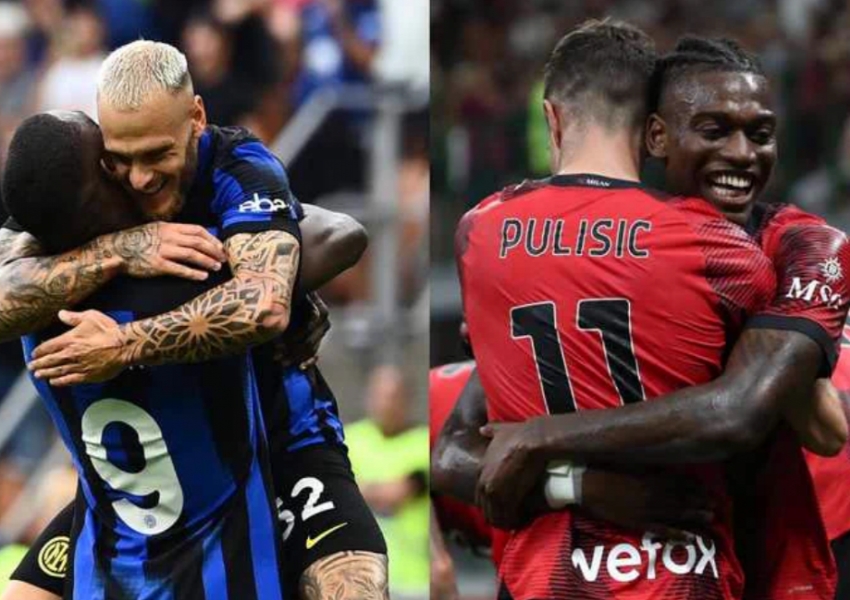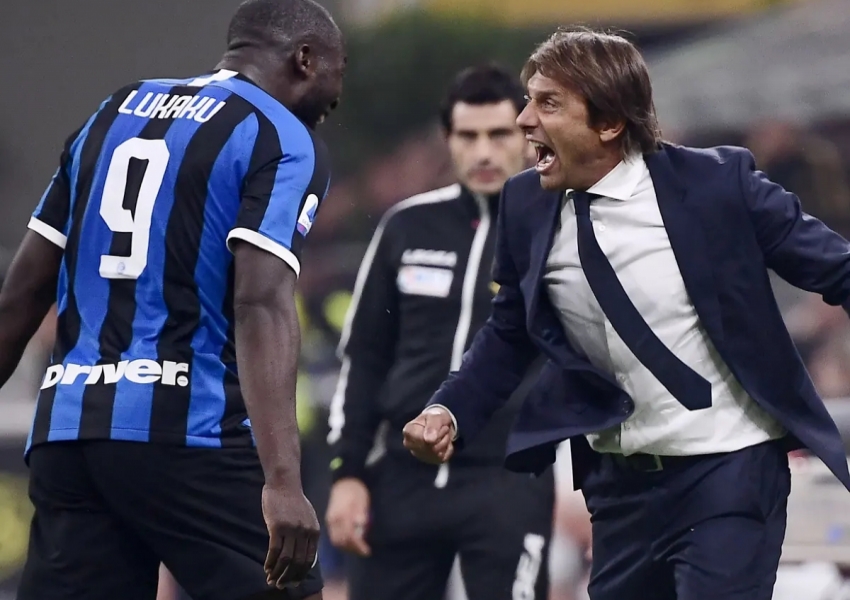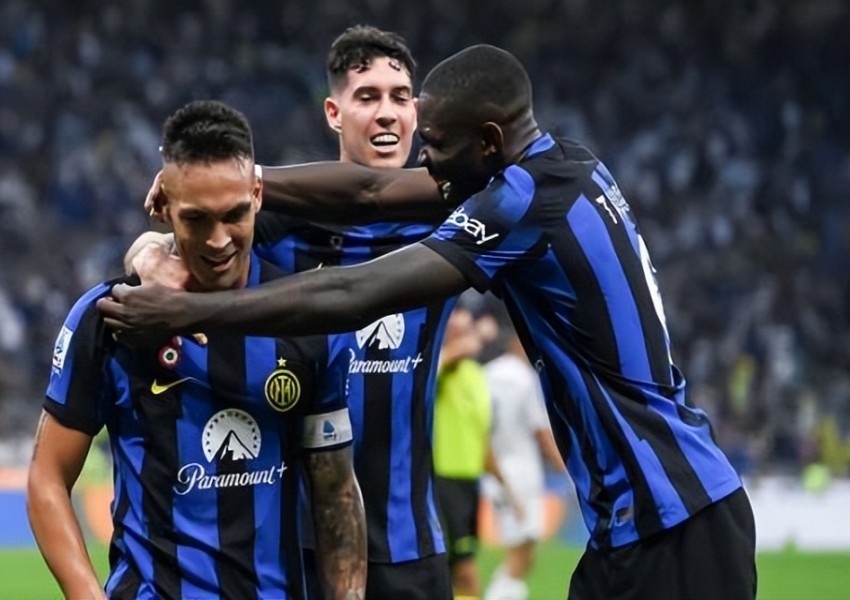Inter Milan Cuts Costs by Over €30 Million as AC Milan's Financial Burden Increases, Reducing the Gap by €42 Million
The excitement in Italian football is palpable as the much-anticipated Milan Derby approaches in Serie A’s fourth round. Both Inter Milan and AC Milan have kicked off the season in perfect form, winning all their matches so far. While pundits and experts like Fabio Capello and Giuseppe Bergomi focus on the on-field aspects of the game, there are others who prefer to analyze the financial aspects of the two clubs, especially when discussing Inter’s recent performances. A common narrative has emerged among certain media figures and commentators: when Inter loses, the focus is on football. When Inter wins, the conversation shifts to finances. According to this narrative, Inter and AC Milan are two clubs with vastly different financial models, and the argument goes that Inter’s higher budget makes it almost obligatory for them to win, while any loss is seen as a disaster. Conversely, AC Milan is painted as the ultimate winner regardless of the outcome on the pitch.

This perspective, while partially rooted in truth, is becoming increasingly outdated. Over the past two years, the financial gap between Inter and AC Milan has narrowed significantly as Inter has aggressively reduced its costs while AC Milan’s spending has gradually increased. The difference in squad-building costs between the two clubs has decreased by €42 million, bringing them closer to a level playing field. Football is an ever-evolving sport, and holding on to outdated comparisons does a disservice to understanding the current dynamics between these two iconic clubs.

Understanding the Financial Landscape: Squad Costs and Salaries
To fully grasp the financial evolution of Inter Milan and AC Milan, it’s important to understand the two primary components of squad costs: player acquisition costs and salary expenses. Player acquisition costs refer to the transfer fees and associated expenses spread over the duration of the player’s contract. For example, if Inter spends €30 million to sign a player like Benjamin Pavard on a five-year contract, the cost to the club’s finances would be €6 million per year. Salary expenses, on the other hand, are the gross (before-tax) wages paid to the players, which in Italy include the taxes paid by the club on behalf of the players.

Gross salary is particularly crucial because, in Serie A, the club bears the responsibility of paying the taxes on the players’ wages. This makes gross salary more significant from a financial perspective than net salary, which is the amount the player takes home. For instance, while Alessandro Bastoni’s net salary is €5.5 million, and Marcus Thuram’s net salary is €6 million, the gross cost to Inter is much higher for Bastoni (€10.18 million) due to the lack of tax benefits that apply to Thuram, whose gross salary costs Inter €7.86 million.
Inter’s Financial Evolution: A Strategy of Cost Reduction
Under Antonio Conte, Inter Milan’s squad-building budget was significantly higher than AC Milan’s, often exceeding it by over €100 million in a single season. However, since Conte’s departure, Inter has made substantial strides in reducing its financial burden, cutting costs across the board. Inter’s squad costs have decreased from nearly €300 million during Conte’s tenure to €214 million last season.
This season, Inter’s efforts to reduce costs have been even more pronounced. The club’s total squad costs for the 2023-24 season are now estimated at €178.7 million, down from €214 million last season—a 14% reduction. This decrease has been achieved through a combination of strategic transfers and salary adjustments. For example, Edin Džeko, whose financial cost to the club last season was €10.28 million, has been replaced by Marcus Thuram, whose cost is €7.86 million. Additionally, high-cost players like Samir Handanović, who was Serie A’s highest-paid second-choice goalkeeper, have been allowed to leave.
It’s important to note that Inter’s current squad cost of €178.7 million includes several players who are out on loan, such as Joaquín Correa, who is currently at a Ligue 1 club. Inter is still responsible for paying a portion of Correa’s transfer fee installments, amounting to around €8.47 million this season. If these loaned-out players are excluded, the cost of the squad currently at Inter’s disposal drops to €161.7 million. This figure brings Inter’s financial commitments much closer to those of AC Milan.
AC Milan’s Rising Costs: Strengthening the Squad at a Price
While Inter Milan has been working to reduce its financial obligations, AC Milan has seen a gradual increase in its squad costs. Last season, AC Milan’s total squad cost was €144 million, with player acquisition costs and salaries being the primary components. This season, AC Milan’s financial burden has risen by €6 million, bringing the total squad cost to approximately €151 million.
The increase in AC Milan’s costs can largely be attributed to the arrival of several new signings during the summer transfer window. Players like Yunus Musah, Ruben Loftus-Cheek, Christian Pulisic, and Samuel Chukwueze have joined the Rossoneri, significantly raising the club’s player acquisition costs. These costs, much like Inter’s, will be spread over the duration of the players’ contracts, with AC Milan expected to bear the financial impact of these deals for the next four to five years. Additionally, the club’s overall financial commitments are further impacted by players like Charles De Ketelaere, who has been loaned out but still contributes to AC Milan’s ongoing financial responsibilities.
The Narrowing Financial Gap: Implications for the Milan Derby and Beyond
The financial gap between Inter Milan and AC Milan has narrowed dramatically over the past few years. From a time when Inter’s squad-building costs exceeded AC Milan’s by over €100 million during the Conte era, the difference had shrunk to €70 million last season. This season, the gap stands at just €28 million, reflecting a significant €42 million reduction. This trend underscores the broader financial realities facing Italian football, where revenue growth has been sluggish, and cost control has become a matter of survival.
For Inter, the strategy of “cutting costs while improving efficiency” is still in progress. Whether these cost-cutting measures translate into on-field success remains to be seen. However, the financial discipline displayed by the club in recent years is likely more significant in the long run than the signing of multiple high-profile players.
As the Milan Derby approaches, these financial dynamics add another layer of intrigue to one of football’s most storied rivalries. Both clubs are undergoing significant transformations, not just on the pitch but also in how they manage their resources. While Inter Milan’s efforts to reduce costs are commendable, AC Milan’s willingness to invest in new talent suggests that the financial balance between the two clubs is still in flux.
The outcome of the Derby, as always, will be decided on the pitch, but the financial strategies employed by both clubs could play a crucial role in determining which of these Milan giants emerges as the dominant force in Serie A this season.
Copyright Statement:
Author: mrfootballer
Source: Mrfootballer
The copyright of this article belongs to the author. Reproduction is not allowed without permission.
Recommended Blog
- Who is Inter's New Striker? The Talented Forward Who Missed Out on Argentina’s Olympic Squad but Caught Messi’s Eye
- K League Round 26: How Will Gangwon's Rising Star Handle the Pressure? Jeonbuk Must Seize Home Opportunity
- Inter Milan's Defeat to Al-Ittihad: Boos Reflect Demand for X-Factor, Two Stars Shine Amid Tactical Evolution
- Europa League Qualifying Round Three: Can Ajax Rebound? Braga Hopes for New Signings to Shine
- Champions League Qualifying Round Three: Has Union Saint-Gilloise Bounced Back? Bodo/Glimt and Opponents Battle for Momentum
- Simone Inzaghi's View: Who Are Inter Milan's Main Rivals for the Title Defense? Juventus Tops the List, Beware of Conte's Napoli
- J.League Round 25: Machida Zelvia Hopes for a Boost from New Signing, Gamba Osaka Needs a Spark
- Marotta's Dual Roles at Inter: Upholding Zhang's Tradition and Gaining €20 Million Transfer Autonomy—Is Inter Following AC Milan's Path?
- UEFA Champions League Qualifiers Third Round: Lille's Tactical Prowess on Display, Can Twente Balance Attack and Defense?
- EFL Trophy Group Stage Opener: Barnsley Aims to Extend Offensive Prowess, Bolton Begins Title Defense
Hot Blog
- English Media: Manchester United Will Win Premier League Title in 2028! History Will Repeat Itself, Two Teams Serve as Inspirations
- 0-2 Double Defeat! China National Team Stuck at 6 Points: No More Direct World Cup Hopes, Two Crucial Matches Ahead
- 4 AM Showdown: Barcelona's Revenge Match! Win = 3-Point Lead Over Real Madrid, Key Players Rested
- China National Football Team Drops 13.6 Points, Slips to 94th in FIFA Rankings: Syria Overtakes, New 9-Year Low
- 0-0 Draw! Japan 12 Shots, 2 Missed One-on-Ones: 8 Matches, 20 Points, Group Winner, Saudi Arabia Stuck at 10 Points in 3rd
- 4-1, Double Win Over Brazil! Argentina Celebrates: World Cup Qualification Secured, 4th Team Globally to Qualify
- Real Madrid Got Lazy: 7 Kilometers Less Running in UCL! Two Superstar Spectators While Barça Outruns Them All
- United Go for Glory: Unbeaten in 10, Fueled by Kobbie Mainoo’s Return, Red Devils Eye Europa League Crown
- Champions League Classic: Barça’s Midfield Maestro Worshipped by Thousands After 11.5KM Marathon
- Champions League Semifinal Odds: Barça at 99%, Real Madrid’s Hopes Dwindle to 6%, PSG Cruise Ahead